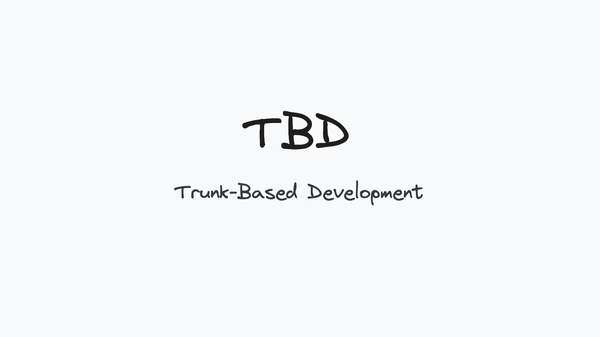8 Angular Myths It’s Time to Forget
Angular is a powerful framework, but there are many myths surrounding it. In this article, we’ll debunk 8 of the most common Angular myths

Angular is a powerful and widely used web application development framework, but there are many misconceptions and myths surrounding it. In this article, we’ll debunk 8 of the most common Angular myths and dive into the reasons behind them. By dispelling these myths, developers can better understand Angular’s capabilities and use it more effectively in their projects.
1. Angular is only suitable for large and complex applications
Reality: While Angular is indeed well-suited for building large and complex applications due to its modular architecture and comprehensive set of tools and abstractions, it can also be used for smaller projects. Angular’s flexibility allows developers to choose which parts of the framework to use and adapt it to their specific needs.
Reason for the myth: This myth may have arisen because many successful Angular projects are large-scale applications, leading people to associate Angular exclusively with large projects.
2. Angular is too complex and difficult to learn
Reality: Angular does have a steeper learning curve compared to some other frameworks, due to its modular architecture and abundance of tools and abstractions. This can make Angular seem complex, especially for beginners. However, with experience and a deep understanding of core concepts, developers can harness the full potential of the framework and manage its complexity.
Reason for the myth: In the past, one of the main reasons behind this myth was the inadequate quality of Angular’s documentation. Around three years ago, the documentation was not as comprehensive and user-friendly as it is today, which led to the perception that Angular is overly complex and difficult to learn. However, the Angular team has significantly improved the documentation, making it more accessible and easier to understand for developers of all skill levels.
3. Angular has poor performance
Reality: Angular is designed with performance and optimization in mind. The framework provides various tools and practices for optimizing applications, such as lazy loading, AOT compilation, and Change Detection. At the same time, an application’s performance largely depends on the developer and their knowledge of Angular’s best practices.
Reason for the myth: This myth may have arisen from early versions of Angular (AngularJS), which did have performance issues. However, starting with Angular 2 and beyond, developers have focused on optimization and improving performance.
4. Angular has weak SEO optimization
Reality: Angular supports server-side rendering with Angular Universal, which allows static versions of pages to be served to search engines. This improves indexing and SEO optimization for the application. Moreover, modern search engines like Google are becoming more advanced in indexing JavaScript applications, further improving SEO for Angular applications.
Reason for the myth: Initially, web applications built using JavaScript frameworks, including Angular, might have faced difficulties in being indexed by search engines due to their inability to fully process JavaScript. However, with the advancements in search engines and the introduction of Angular Universal, this myth has become less relevant.
5. Angular is only for developing SPA
Reality: Although Angular was initially created for developing SPAs, the framework can also be used for creating multi-page applications, hybrid applications, or even for adding interactivity to static web pages. With the help of additional tools and frameworks, Angular can also be utilized for mobile app development. Ionic, a popular framework that allows developers to build cross-platform mobile applications using Angular, HTML, and CSS, is one such example. Another option is NativeScript, which enables the creation of native mobile apps for iOS and Android with Angular. Angular’s capabilities allow developers to choose an appropriate architecture for their projects and use the framework in various contexts.
Reason for the myth: This myth arose because Angular was initially a solution for creating SPAs, and many successful Angular projects were of this type. However, Angular has evolved, and its capabilities now allow developers to create various types of applications.
6. Angular imposes many restrictions on developers
Reality: Angular provides many strict recommendations and best practices, which can seem restrictive to developers. However, these recommendations and practices are aimed at improving code quality, simplifying maintenance, and scaling applications. Angular gives developers flexibility in choosing architecture and third-party libraries, but adhering to best practices and standards usually leads to more reliable and manageable projects.
Reason for the myth: The myth arose because Angular offers many recommendations and code samples that may seem restrictive, especially for developers accustomed to more flexible and loose approaches, as is the case with some other frameworks. However, these recommendations and practices are designed to help developers achieve the best results using Angular.
7. Angular is outdated due to React and Vue
Reality: Angular, React, and Vue are the three most popular frameworks for web application development, and each has its strengths and areas of application. Angular continues to evolve, and its community actively works on improving the framework, adding new features, and supporting more modern standards. The choice between Angular, React, or Vue should be based on developer preferences, project requirements, and relevant technology knowledge, rather than rumors of one technology being outdated.
Reason for the myth: Newer frameworks, such as React and Vue, have attracted developer attention with their simplicity and flexibility. This can create the impression that Angular is outdated or less relevant, especially considering its relative complexity and more formal approach to development. However, Angular remains a sought-after and current framework for developing scalable and reliable web applications.
8. Updating Angular is always difficult and leads to problems
Reality: Angular is updated following semantic versioning rules, which makes updates easier and provides developers with a clear understanding of changes between versions. Since the release of Angular 6, updating has become even simpler thanks to the ng update command, which automatically updates dependencies and migrates application code according to new recommendations.
Reason for the myth: In the past, updates between some versions of Angular could be complex and labor-intensive, especially when transitioning from AngularJS (1.x) to Angular 2. This led to the myth of difficult updates. However, modern versions of Angular have made the update process significantly simpler and more comprehensible.
Angular is a powerful and flexible framework for web application development that continues to evolve and improve. While many myths and misconceptions about Angular can create a false impression of its capabilities and complexity, developers who delve deeper into the framework and follow best practices can achieve excellent results and create high-quality applications.
If you need assistance with any Angular-related problem or want to work with a team of Angular experts, consider reaching out to ng.consulting. With their extensive experience and expertise in the Angular ecosystem, they can help you overcome any challenge and ensure the success of your project. Let ng.consulting help you make the most of Angular and take your application development to the next level.



